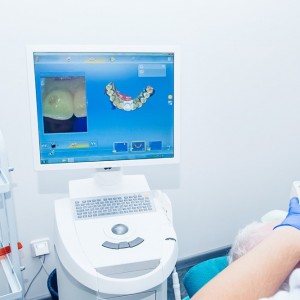
Restorative Dentistry for the Primary Dentition
Pediatric restorative dentistry is a dynamic combination of ever-improving materials and tried-and-true techniques. Many aspects of primary teeth restoration have not changed for decades. In 1924, G.V. Black outlined several steps for the preparation of carious permanent teeth to receive an amalgam restoration.
These steps have been adopted, with slight modification, for the restoration of primary teeth. Restorative techniques for the primary dentition using amalgam and stainless steel crowns (SSCs) have remained relatively consistent for decades. However, with an increased use of adhesive restorative materials and bonding systems, there has been a shift to more conservative preparations and restorations. Materials such as glass ionomers, resin ionomer products, and improved resin-based composite systems have been developed, which are having a profound impact on the restoration of primary teeth.
Additionally, premilled zirconia crowns now offer an esthetic alternative to SSCs. Unfortunately, long-term clinical data (i.e., >3 years) regarding many of these newer materials are limited; but even so, many clinicians are successfully using these materials with increasing frequency.
The clinician can stay with the proven, successful materials of the past, such as amalgam and stainless steel, or move to newer, more esthetic materials that offer advantages such as bonding to tooth structure, fluoride release, improved esthetics, reduction of mercury exposure, and conservation of tooth structure.
None of the esthetic materials have the track record and proven durability of amalgam or stainless steel, but when they are placed appropriately, they can provide useful restorations for the life span of the primary tooth.
Authors: William F. Waggoner, Travis Nelson
Source: https://www.sciencedirect.com/
 Related articles
Related articles
Restorative dentistry 03 November 2025
The worldwide interest of both dentists and patients in esthetic dentistry has affected decision-making in dental practice.
Restorative dentistry 12 September 2025
Traumatic tooth injuries involve function and aesthetics and cause damage that range from minimal enamel loss to complex fractures involving the pulp tissue and even loss of the tooth crown.
The purpose of restorative dentistry is to restore and maintain health and functional comfort of the natural dentition combined with satisfactory aesthetic appearance.
Oral surgery 15 July 2025
The influence of patients' decisions on treatment planning in restorative dentistry
As part of treatment planning, options are presented to patients by dentists. An informal discussion takes place involving a cost-benefit analysis and a treatment plan is agreed.
Restorative dentistry 01 July 2025
Advances in CAD/CAM Technology for Chairside Restorative Dentistry: A Workflow Analysis
Chairside CAD/CAM technology has revolutionized restorative dentistry, offering streamlined workflows and improved patient outcomes.
 Read more
Read more
Periodontology 14 November 2025
This study was carried out to assess the oral hygiene awareness and practices amongst patients visiting the Department of Periodontology at Gian Sagar Dental College and Hospital, Ramnagar (Patiala).
Editorials 14 November 2025
Penn Dental Medicine shared its expertise in caring for persons with disabilities with dental care providers from throughout Jamaica at a 1 ½ -day hands-on continuing education program, held October...
News 14 November 2025
Dr. Thomas M. Paumier, a dentist in Canton, Ohio, is the new President-Elect of the American Dental Association (ADA). Dr. Paumier was elected at the ADA House of Delegates meeting in Washington,...
News 14 November 2025
Premier Dental Implants & Prosthodontics is proud to announce the opening of its newly renovated dental office and the launch of its new website
News 14 November 2025
Henry Schein One and AWS Collaborate to Transform Global Dentistry with Generative AI
Industry leaders join forces to bring advanced AI capabilities to dental technology platforms — redefining patient care, clinical efficiency, and practice performance worldwide














